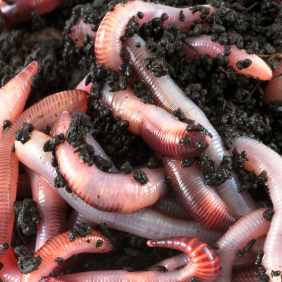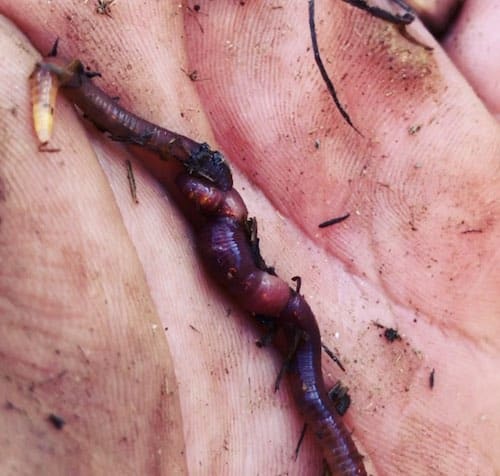Red wigglers: For eco-conscious gardening
Red Wigglers: The Secret to Eco-Friendly Composting
Red wigglers, scientifically known as Eisenia fetida, play a pivotal duty in lasting composting methods, using an all-natural service to waste monitoring. red wigglers. These worms not just take in organic products however also change them into valuable vermicompost, improving soil health and advertising ecological equilibrium.
What Are Red Wigglers?
Although lots of people know with earthworms, red wigglers (Eisenia fetida) are a certain species that play a critical role in composting. Belonging to Europe, they have actually adjusted well to a range of environments, particularly in decomposing raw material. Unlike typical garden worms, red wigglers prosper in rich, damp environments, making them perfect for composting systems.
(red wiggler fishing worms)These worms are characterized by their reddish-brown coloration and elongated bodies, generally determining in between 3 to 4 inches in length. Red wigglers are epigeic worms, meaning they live near the soil surface and eat rotting organic product. Their high reproductive price enables populations to grow rapidly under optimum problems, with the capacity to double in number every few months.
Red wigglers possess an unique digestive system that allows them to damage down organic waste efficiently. As they consume food scraps, they generate nutrient-rich spreadings, which serve as an outstanding fertilizer for plants. This varieties is not just efficient in converting waste but additionally adds to soil health, advertising microbial activity and improving dirt structure. Their sustainable nature makes red wigglers a valuable property in environment-friendly composting methods.
Benefits of Using Red Wigglers
Using red wigglers in composting systems provides many advantages that improve both the efficiency of waste disintegration and the top quality of the resulting compost. These earthworms, scientifically called Eisenia fetida, are renowned for their outstanding ability to consume organic waste, transforming it into nutrient-rich vermicompost at a remarkable price. Their fast food digestion procedure speeds up the break down of kitchen area scraps and yard waste, considerably minimizing the moment needed for composting.
In addition to their effectiveness, red wigglers contribute to enhanced dirt structure and fertility. The vermicast created by red wigglers is rich in essential nutrients, valuable microbes, and humic acids, all of which boost dirt health and wellness and advertise plant growth. This nutrient-dense compost helps retain moisture and boosts oygenation in the dirt, cultivating a prospering ecological community for plants.
Furthermore, making use of red wigglers for composting decreases land fill waste, contributing to a more sustainable waste monitoring system. By drawing away natural products from landfills, composting with red wigglers lessens greenhouse gas emissions, making it an environmentally friendly selection for ecologically mindful individuals and neighborhoods. In general, red wigglers give a reliable and sustainable remedy for composting.
Establishing Up Your Worm Container
Producing a worm bin is a simple procedure that requires cautious consideration of materials and conditions to ensure a thriving setting for red wigglers. Begin by picking an ideal container, which can be a plastic container or wooden box, with an ability of at least 10 gallons for reliable composting. Make sure the container has sufficient ventilation by piercing little holes in the lid and sides to allow air movement.
Following, prepare the bed linen, which is critical for preserving moisture and giving a habitat for the worms. Ideal materials include shredded newspaper, cardboard, coconut coir, or peat moss. Objective for a bed linens deepness of approximately 4-6 inches, guaranteeing it is moist however not overly wet.
It is very important to keep the ideal temperature for your worm container, preferably in between 55 ° F and 77 ° F(13 ° C and 25 ° C) Position the bin in a shaded area to stop overheating. In addition, keep the container far from straight sunlight and severe weather to protect the worms.
Feeding Your Red Wigglers
Feeding your red wigglers is an important facet of effective worm composting, as it straight impacts their wellness and the efficiency of your composting system - red wigglers. Red wigglers prosper on a well-balanced diet being composed largely of organic waste materials.
(red wigglers near me)To make certain ideal feeding, it is important to present food progressively. Start with percentages to permit the worms to take in the material fully before adding a lot more. This technique protects against overfeeding, which can result in anaerobic conditions and negatively affect worm health. Screen the food disintegration process and readjust the amount based upon just how swiftly the worms are processing the waste.

Keeping Your Worm Garden Compost System
A properly maintained worm garden compost system is vital for taking full advantage of the efficiency and long life of your composting initiatives. Normal tracking of moisture degrees is essential, as red wigglers prosper in a damp setting, ideally around 70% humidity. If the bedding becomes too dry, gently haze it with water; alternatively, if it ends up being extremely wet, add dry bed linen such as shredded paper or cardboard to soak up excess moisture.
Temperature level control is likewise essential. Red wigglers favor temperatures between 55 ° F and 77 ° F(13 ° C to 25 ° C) If temperatures exceed 85 ° F(29 ° C), the worms may end up being stressed or die. Guarantee your garden compost system is kept that site in a shaded, ventilated location to avoid getting too hot.
Monitor the worm population and their task; a prospering populace suggests a well-balanced environment. By following these upkeep techniques, you can make sure an efficient and sustainable worm composting system that effectively reuses natural waste.

Verdict
Finally, red wigglers play an important role in green composting by efficiently transforming organic waste into valuable vermicompost. Their capacity to prosper in decomposing products not just aids in reducing land fill waste and greenhouse gas discharges but additionally enhances dirt health and wellness. By promoting moisture retention and aeration, these worms add dramatically to lasting horticulture techniques. Welcoming making use of red wigglers stands for a practical approach to improving ecological sustainability and cultivating healthier environments.